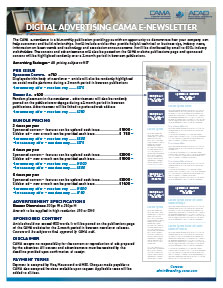Avoid the “Great Resignation” with these 9 Best Practices
The media have made much of the “Great Resignation,” a phenomenon in which a record number of U.S. employees have walked away from their jobs since the pandemic began. Experts have suggested many reasons for this, but it all comes down to the grass looking greener, or healthier, somewhere else.
While Canadian employees haven’t followed suit, a global survey of 30,000 people found that over 40% are considering leaving their employer this year..[1] “That’s a lot of unhappy employees,” says Esther Fleurimond, a WSPS Health & Safety Specialized Consultant in Mental Health — Healthy Workplaces.
Take note that there are lots of jobs waiting for any unhappy employee — over a million at the beginning of September, according to Statistics Canada.[2]
While hiring may be an immediate priority for some businesses, retaining existing employees should be an ongoing priority for every business.
How? Cultivate a culture of psychological safety,” says Esther. “I’m passionate about psychological safety because going forward it’s what will differentiate businesses that are just surviving from those that are thriving.”
Research into psychological safety has identified many benefits, such as greater confidence, creativity, trust, and productivity. All of this creates a solid business case. For example:
- A Gallup report noted that employees of organizations that increase psychological safety feel more engaged, which can lead to a 12% increase in productivity.[3]
- Deloitte Canada quantifies the return on investment for Canadian firms that invest in mental health programming. After just one year, says the study, the median annual return is $1.62 for every dollar invested. After three years, the return more than doubles to $2.18.[4]
9 best practices for managers and supervisors
Senior leadership support is critical to any initiative, including creating a psychologically safe environment. But on a daily basis managers and supervisors also have an enormous influence on whether their employees have a positive experience at work. Esther encourages managers and supervisors to implement these nine best practices to create and sustain a psychologically safe environment among their team members[5]:
- Establish clear expectations on what employees are supposed to do.
- Recognize employees when they do their job well.
- Provide constructive feedback when they don’t.
- Listen to their concerns.
- Share information with them when you’re about to change their roles or introduce a new process or policy.
- Make yourself available to answer questions.
- Plan their work effectively. “If employees have too much work, they have to feel comfortable telling you.”
- Support their decisions. “If an employee has an elderly relative to care for, a childcare issue, or is in mental distress, you have to support the employee in whatever they decide to do. Otherwise, they disengage.”
- Ask for employee input before making a decision that affects their work.
Putting these practices in place doesn’t have to be complicated, says Esther. “Start with two-way conversations. Schedule a couple of minutes in each team meeting or during a walk-through to ask employees how they are doing. Not the work, not the operations, not the budget, not the planning, but the person.”
Resources
The following resources can help you better understand and implement a psychologically safe workplace.
1. Three new offerings from WSPS’ healthy workplace consultants:
- Workplace Mental Health: Administering and Interpreting PHS Assessments
- Workplace Mental Health Supplemental Needs Assessments
- Workplace Mental Health Gap Assessment CSA Z1003
To find out more, contact Customer Care at 1 877 494 WSPS (9777) or customercare@wsps.ca.
2. “What Can Employers Do to Reduce Work– Life Conflict,” from Dr. Linda Duxbury and Dr. Chris Higgins’ report, [IT]Work–Life Conflict in Canada in the New Millennium: A Status Report[IT], Health Canada, pp 76-80; https://publications.gc.ca/collections/Collection/H72-21-186-2003E.pdf
3. Free online resources from
- Guarding Minds @ Work (GM@W), developed by Simon Fraser University’s Centre for Applied Research in Mental Health and Addiction; www.guardingmindsatwork.ca/info/index
- Think Mental Health http://thinkmentalhealth.ca/, a joint effort of Ontario Health and Safety System partners to provide employers with easy-to-access resources
4. CAN/CSA-Z1003 National Standard: Psychological Health and Safety in the Workplace https://www.csagroup.org/store/product/CAN%25100CSA-Z1003-13%25100BNQ 9700-803%251002013/. Use the “View/Access” option to explore at no cost.
Have health and safety questions? Please contact Denise Lam, WSPS Account Manager, Small Business at Denise.Lam@wsps.ca.
About Workplace Safety & Prevention Services (WSPS)
Workplace Safety & Prevention Services (WSPS) is a not-for-profit organization committed to protecting Ontario workers and businesses. A proud partner in Ontario’s occupational health and safety system and a trusted safety advisor since 1917, WSPS has a rich history of making Ontario workplaces safer. WSPS serves the manufacturing, agricultural and service sectors. WSPS offers unparalleled health and safety expertise, consulting, training and resources for businesses of any size. For more information visit WSPS.ca.
Copyright information
This article was prepared by Workplace Safety & Prevention Services (WSPS). At WSPS we are committed to helping businesses understand their risks and legal obligations to stay in compliance and build safer workplaces. If you would like permission to republish or use information in this article, please contact Jessica Bowes, Content Development Lead at jessica.bowes@wsps.ca.
Notes
1. “The Next Great Disruption Is Hybrid Work—Are We Ready?,” Microsoft, March 22, 2021; www.microsoft.com/en-us/worklab/work-trend-index/hybrid-work
2. “Payroll employment, earnings and hours, and job vacancies, September 2021,” Statistics Canada, November 25, 2021; www150.statcan.gc.ca/n1/daily-quotidien/211125/dq211125a-eng.htm?HPA=1
3. Jake Herway, “How to Create a Culture of Psychological Safety,” Gallup, December 7, 2017; http://www.gallup.com/workplace/236198/create-culture-psychological-safety.aspx
4. “The ROI in workplace mental health programs: Good for people, good for business,” Deloitte Insights, p. 10; www2.deloitte.com/content/dam/Deloitte/ca/Documents/about-deloitte/ca-en-about-blueprint-for-workplace-mental-health-final-aoda.pdf
5. Best practice in all these nine areas can be found on the Canada Life website, Workplace Strategies for Mental Health: Approaches for people leaders https://www.workplacestrategiesformentalhealth.com/topic/Approaches-for-people-leaders


%202023.png)


